November 10, 2022: Robotic Turtles, Dimming Maui, Germany says”Nien!” to Ocean Mining, Bluefin Tuna Bounce, and more…..
November 10, 2022 – We gather news: You stay informed
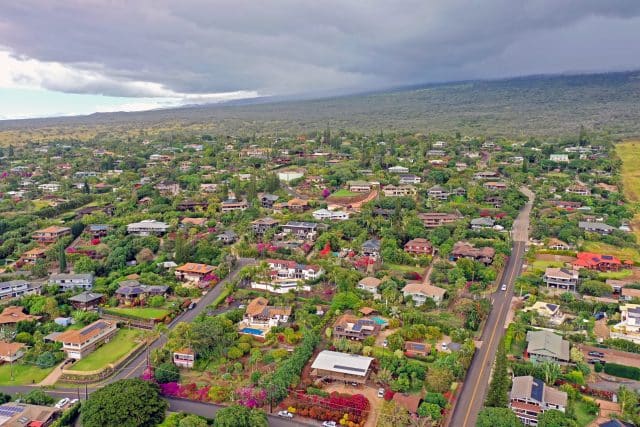
1. Maui Dims Outdoor Lighting to Protect Wildlife
The Maui County Council adopted a measure to restrict the amount of blue light emitted by outdoor lighting fixtures. The goal is to reduce the amount of artificial light that results in injury or death to thousands of migrating birds, sea turtles, and other wildlife every year.
Light pollution is a serious threat to wildlife. Endangered sea turtles get confused by bright, onshore lighting, and animals that travel inland, crossing roads, are hit by cars, or attacked by dogs or other predators.
Outdoor lighting fixtures, except for neon, must limit short wavelength content to no more than 2% of blue light, according to the bill. Mercury vapor must not be used at all. Exemptions are built into the bill such as aviation lighting conducive to safe aircraft navigation as are most non-oceanfront private homes.
The bill is effective July 1, 2023.
Thank you for your generous gift that will help us continue the production of this weekly, free publication
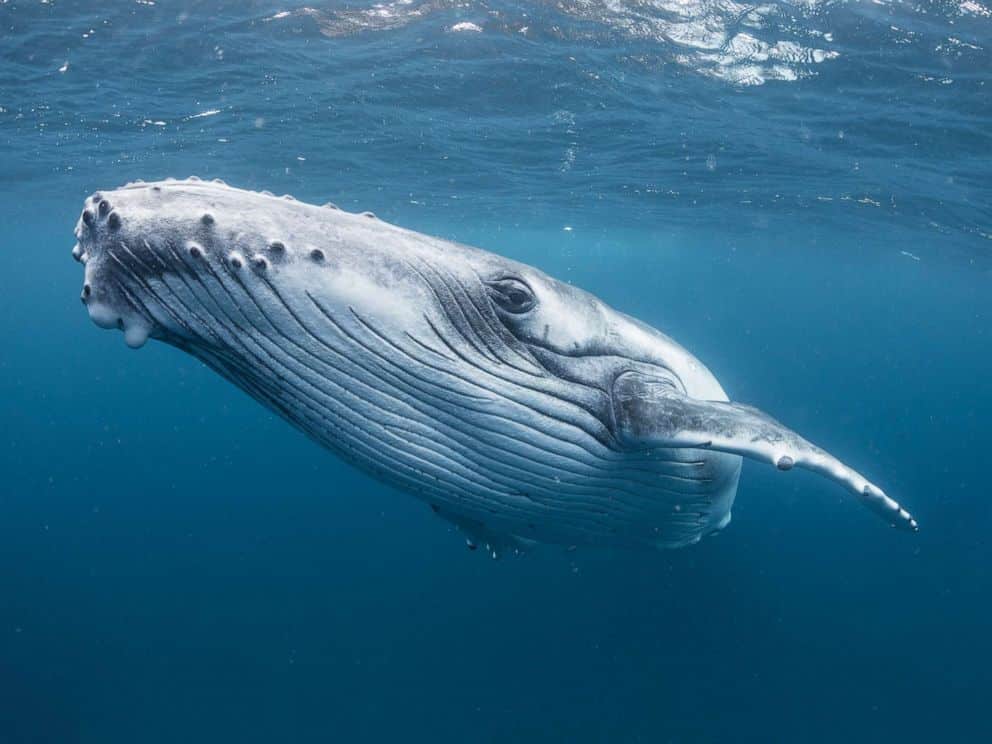
2. Whales Ingest Millions of Microplastic Particles a Day: Study Finds
Filter-feeding whales are consuming millions of particles of microplastic pollution a day, according to a study, making them the largest consumers of plastic waste on the planet.
The research is the first to estimate microplastic consumption for blue, fin, and humpback whales, which are baleen whales and use filters to catch their prey. It was found that virtually all the microplastics consumed are in the krill and fish that whales eat, rather than in the water. It was also discovered that the plastic particles are similar in size to the food the smaller organisms eat.
“It’s a sad story about whales, but also it’s a story about us,” Dr. Matthew Savoca, a research team member, said, noting that human diets are also affected. “Whether it’s cod or salmon or other fish, they are eating those same fish that the humpback whales are eating.
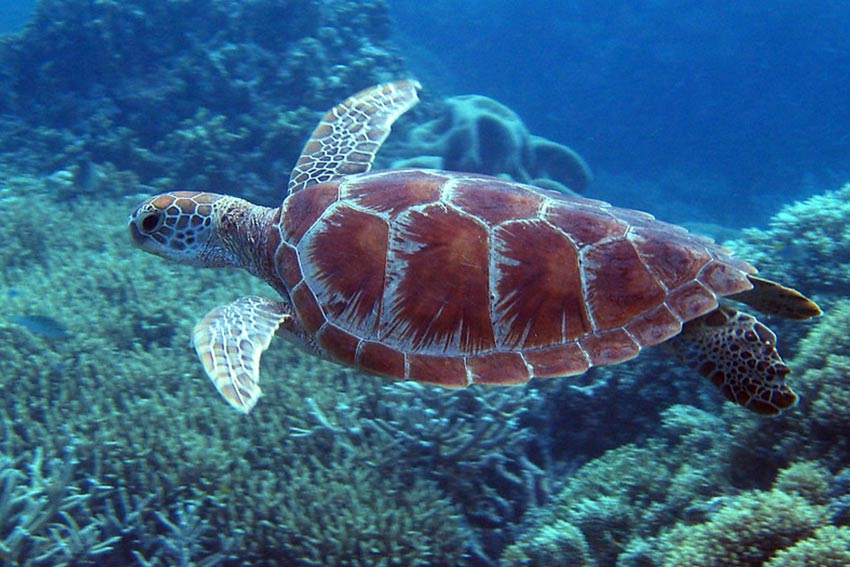
3. Robot Turtles Deployed to Spy on Real Life Cousins
Using underwater drones to film wild sea turtles on Australia’s Great Barrier Reef has allowed Auckland University of Technology (AUT) scientists to better understand the movements of these efficient swimmers, which can migrate thousands of kilometers through the ocean each year.
The paper, New insight into the swimming kinematics of wild green sea turtles (Chelonia mydas), published in Nature – Scientific Reports, paves the way for AUT’s BioDesign Lab team to develop technologies that mimic turtle swimming patterns and flipper movement – including the creation of a highly efficient turtle-inspired underwater drone that can contribute to the conservation and monitoring of key species in our ocean environment.
The analysis led to the discovery that wild green sea turtles’ five-stage swimming patterns differ from those described in previous studies of juveniles in captivity. The results of this research bring the team closer to developing a bio-inspired underwater robot
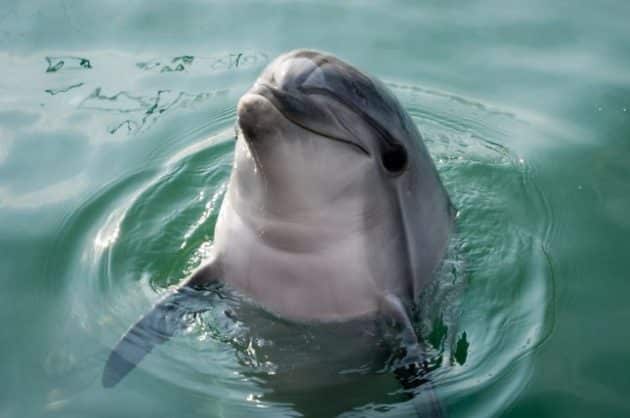
4. Black Sea Military Operations Driving Porpoises to the Brink?
Along with thousands of men, women, and children who have died since Russia invaded Ukraine in February, there have been hundreds of casualties in the Black Sea among the resident dolphin and porpoise populations.
More than 700 deaths, primarily in dolphins and harbor porpoises, have been recorded on the coasts of countries that border the sea, including Bulgaria, Romania, Turkey, and Ukraine.
Researchers are working to determine the cause of the deaths that have been observed, but the ongoing war – and the threat posed by drifting mines – make data collection and boat surveys difficult.
There have been reports of dolphins washing ashore with physical injuries, like burns, which could be a direct result of being caught in the crossfire. In addition, there has been an increase in strandings, and dolphins caught in bycatch which could be a consequence of the loud noises associated with warfare.
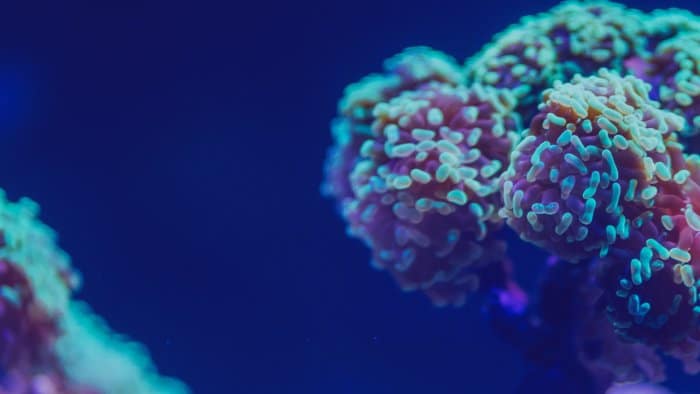
5. Heat ‘Inferno’ Ravages Mediterranean Corals
In the temperate shallows of the Mediterranean, once-vibrant coral forests that provide a crucial haven for biodiversity now stand bleached and brittle, transformed into skeletons by record summer temperatures.
Gorgonian corals, which have flexible skeletons encrusted with polyps, are found across the planet. They are said to create “forests”, sheltering a huge array of species. But they are acutely vulnerable to human activities; fishing nets, anchors and careless divers can rip their delicate structures, while exposure to continuous and intense heat can be lethal
This summer a major marine heatwave hit the western Mediterranean, with water up to five degrees Celsius hotter than normal. The effect was like an underwater inferno. There are fears that another hot spell cannot be ruled out before the end of the autumn, causing scientists to worry that repeated periods of heat stress could be devastating for the corals
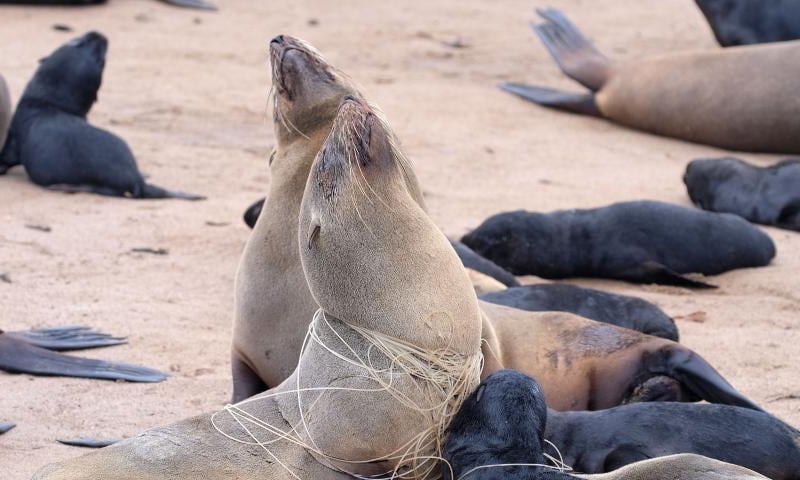
6. Namibia Fights Ocean Plastics
Ocean Conservation Namibia (OCN) is a private initiative founded in 2020 by seven volunteers. There is a wide range of wildlife in aquatic ecosystems. However, in recent years, the use of plastic bags has created a hazard for wildlife, raising concerns about the safety of marine animals. Their mission is to rescue seals entangled in ocean trash and plastic pollution, specifically discarded fishing lines and ghost nets. Since the initiative’s beginning in 2020, they have rescued approximately 2,800 Cape Fur Seals and collected 458 snake fishing lines and thousands of plastic bags from the seals. “So much of what is going to waste can be recycled,” said Naude Dreyer, co-founder of Oceans Conservation Namibia. “There need to be stronger penalties on people caught dumping plastic/rubbish, and much stronger penalties on the fishing industry when caught dumping fishing gear.”
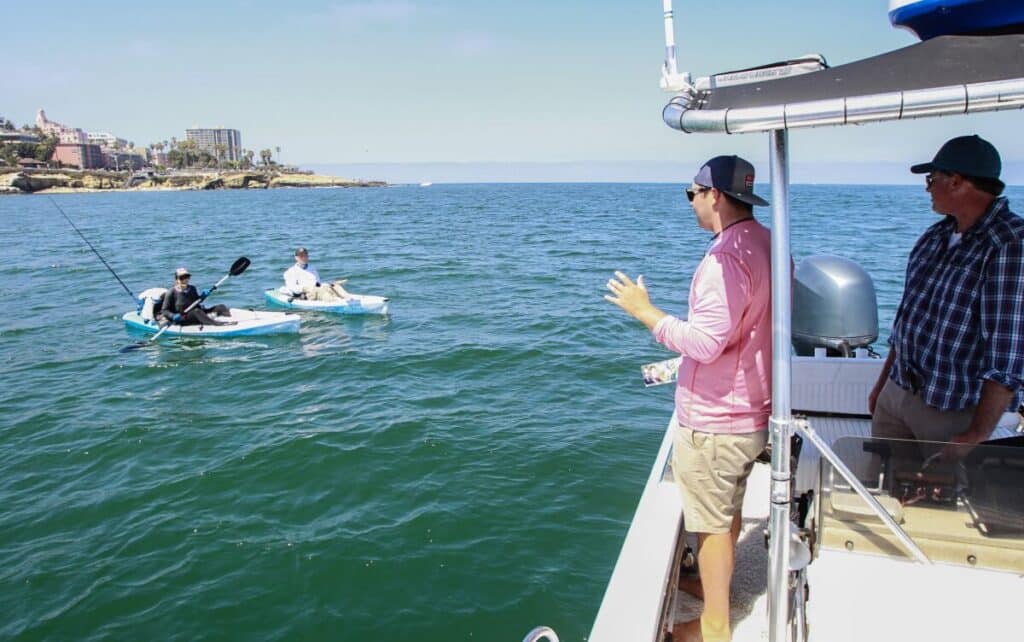
7. Triumph! A Decade of California Marine Protected Areas
A decade after California formed a network of 124 Marine Protected Areas (MPAs), state leaders gathered to discuss their effectiveness and press for strengthened ocean protection.
California, with 1,100 miles of shoreline, “is known for its global environmental leadership,” A key achievement spurring that leadership was the establishment of the first MPA network in the United States in 2012.
“MPAs effectively protect biodiversity and build resilience to ocean stressors like marine heat waves,” and are “an insurance policy” to safeguard marine life against climate change.
To protect biodiversity and strengthen climate resilience, “scientists believe we must conserve at least 30 percent of … land and [coastal] waters by 2030, a global goal known as ‘30×30,’” and is defined as “land and coastal water … durably protected and managed to sustain functional ecosystems, both intact and restored, and the diversity of life that they support.
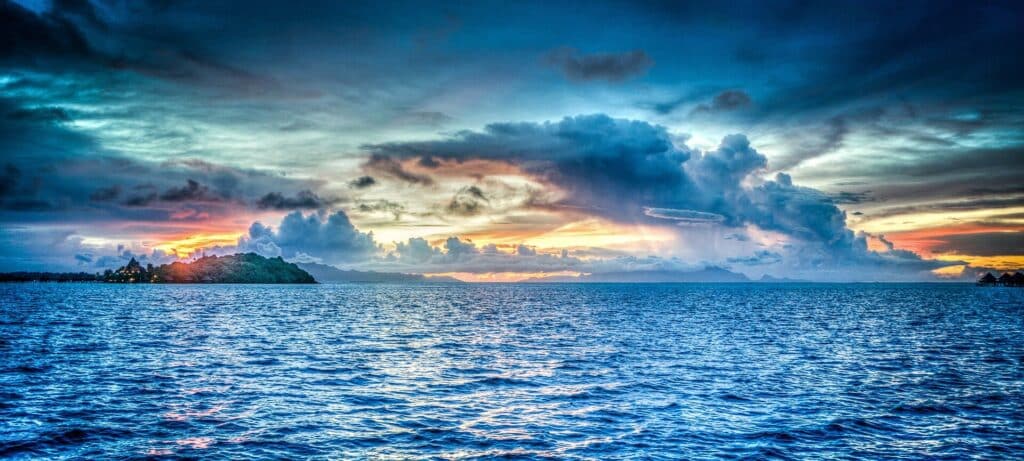
8. Eight million-Year-Old Abundance Causes Current ‘Dead Zone’
Oxygen-starved Ocean “dead zones,” where fish and animals cannot survive, have been expanding in the open ocean and coastal waters for several decades because of human agricultural and industrial activity. In trying to predict the scale and location of future dead zones, scientists have looked to the past for historical clues.
A coastal ocean dead zone is mainly caused by the flow of excess nutrients humans use on land, such as fertilizer application. These zones also occur naturally in the open ocean, “It remains unclear how these dead zones will change as the planet warms. So, we studied the history of the eastern Pacific dead zone in order to better predict its future behavior.”
“In order to better protect marine ecosystems and manage fisheries, it is critical to predict how an ocean ‘dead zone’ will evolve in the future.
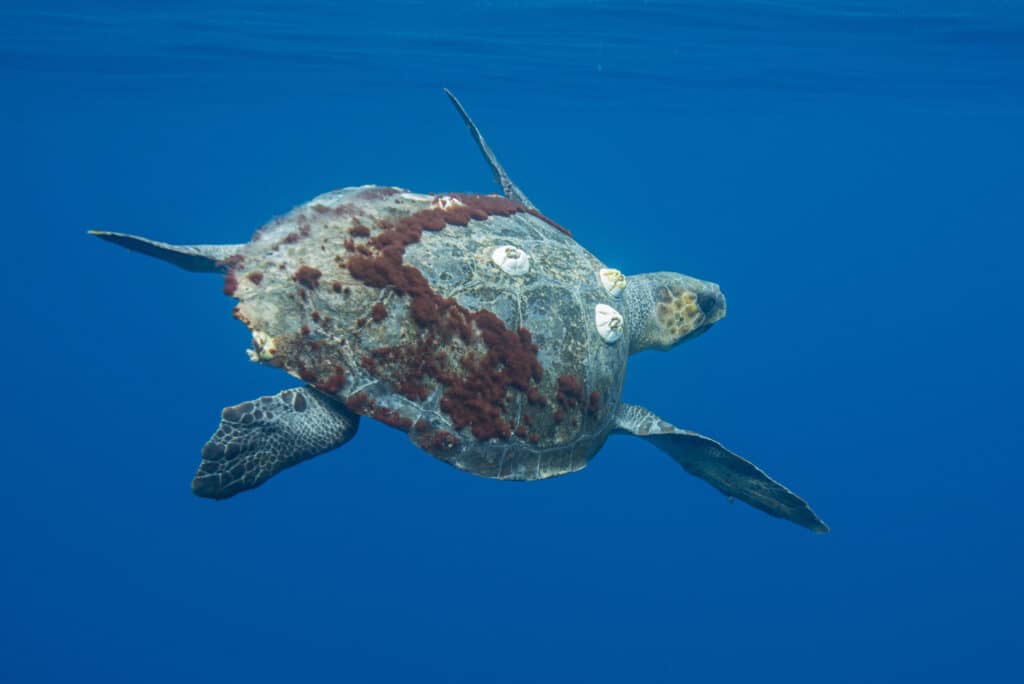
9. Olive Ridley Sea Turtles Need Protection on the Move…
A marine biologist and an evolutionary ecologist studied the nesting/migration habits of endangered olive ridley sea turtles. This information is vital for managing the turtles’ recovery – research shows that two identical-looking olive ridleys may follow quite different paths.
Olive ridleys are among the smallest of the world’s sea turtles and are found in the tropical Atlantic, Pacific, and Indian oceans. They swim hundreds to thousands of miles from their nesting beach, moving continuously among multiple areas, following unpredictable and widely dispersed pathways that vary year to year.
Current conservation strategies for sea turtles emphasize protecting static migratory corridors. But this approach will not benefit nomadic olive ridleys. Instead, these turtles’ wide-ranging migrations and shifting use of space require a dynamic ocean management strategy. This approach uses real-time data to track target animals where they are and creates movable protected zones in a changing environment
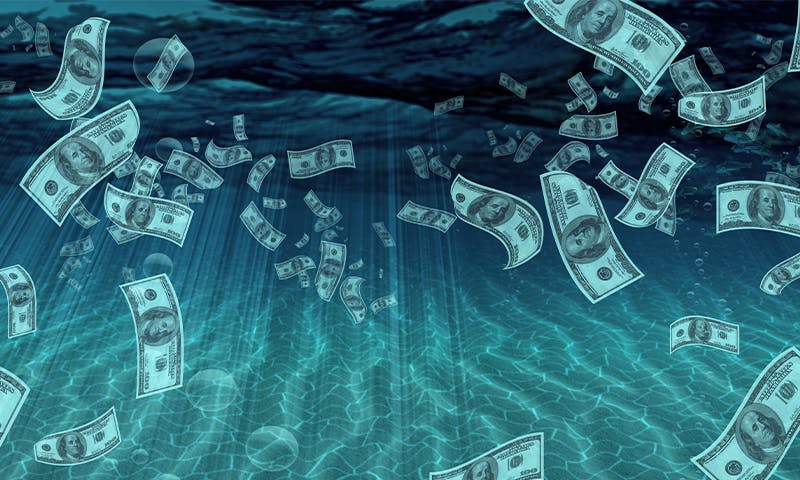
10. Your Debt Can Save the Ocean
The Republic of Seychelles is a country of 115 islands strewn over 700 miles of turquoise waters, rich in biodiversity, and home to many endemic species. Its land area is tiny: 176 square miles of land dwarfed by 521,000 miles of marine territory, roughly 200 nautical miles from shore.
In 2018, the Nature Conservancy (TNC), in concert with Seychelles’ government, launched the world’s first-ever Blue Bonds for Ocean Conservation (BBOC) program, based on a concept called debt-for-nature swaps. Instead of outright forgiving a portion of a country’s debt in exchange for local conservation measures, debt is “restructured,” and the savings are diverted directly into a conservation fund to benefit the country in question.
TNC says their projects to date are only the beginning. They ultimately hope to use blue bonds to protect about 1.5 million square miles of ocean and mobilize $1.6 billion for ocean conservation.
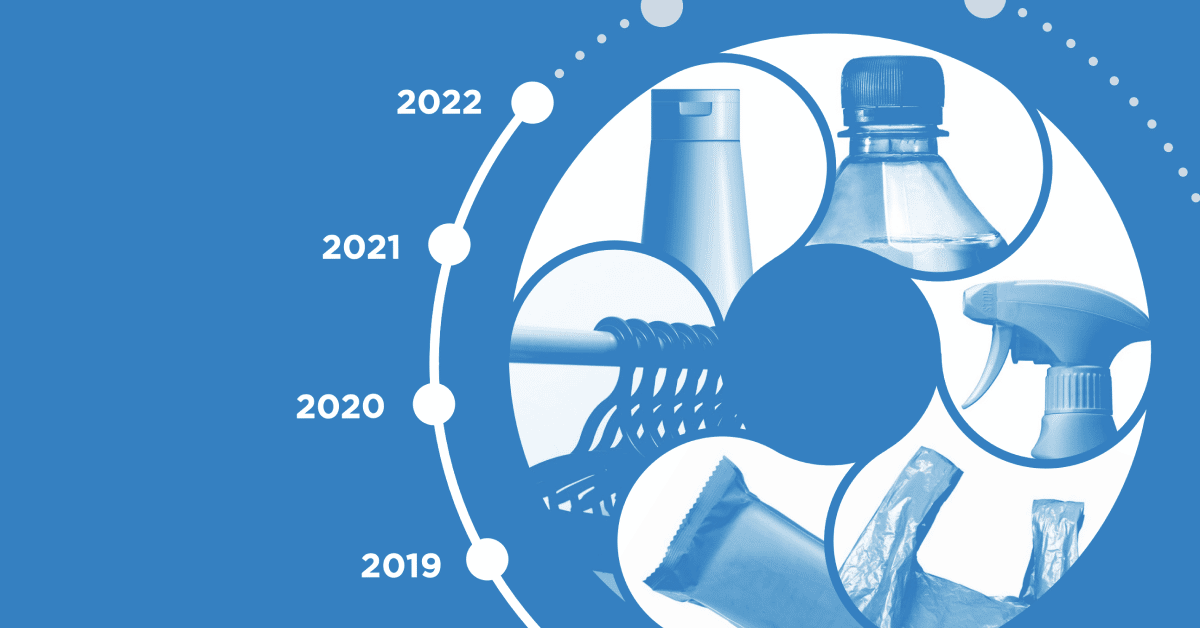
11. Global Plastics Commitment 2022 Results
Driven by the goal of tackling plastic pollution at its source, through the Global Commitment and Plastic Pact network more than 1,000 businesses, governments, and other organizations have united behind a common vision of a circular economy for plastic, in which it never becomes waste. Signatories to the Global Commitment, which together account for more than 20% of the plastic packaging market, have set ambitious 2025 targets to help realize that common vision. This fourth annual progress report looks at how the signatories are faring against these targets.
1) While strong progress is being made in some areas, key 2025 targets are expected to be missed.
2) The prospect of not meeting all 2025 targets reinforces the urgency for businesses to accelerate action, particularly around reuse, flexible packaging, and decoupling business growth from packaging use.
3) Governments need to take immediate action to accelerate progress and have the opportunity to promote a high ambition level in upcoming negotiations for a legally binding instrument on plastic pollution.
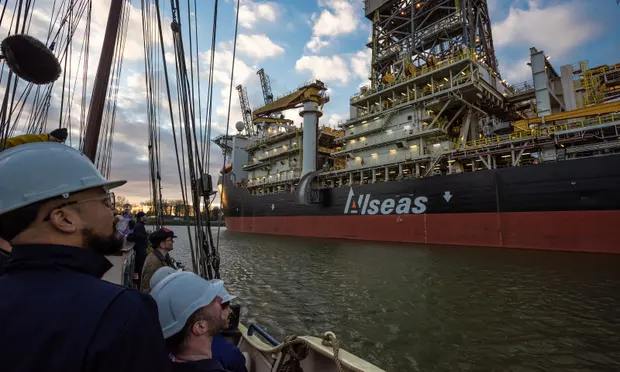
12. Germany Speaks Out About Sea Mining
Germany has called for a halt in the contentious deep-sea mining industry, claiming that not enough is known about the potential consequences of mining the ocean floor. While other countries have previously called for a temporary halt to any deep-sea metals extraction, Germany, the world’s fourth-largest economy, has been the most impactful opposition to date as they hold two of the 31 licenses for seabed exploration. Greenpeace Germany’s marine expert, Till Seidensticker, described the statement as a “good first step” toward effective deep sea protection, as scientists have warned that mining nickel, cobalt, and other metals on the seabed would be “dangerous,” “reckless,” and “irreversible” to ecosystems. “It’s good news that the German government is calling for the precautionary principle to be upheld for the deep sea, joining countries like Spain and New Zealand in doing so,” he also said.
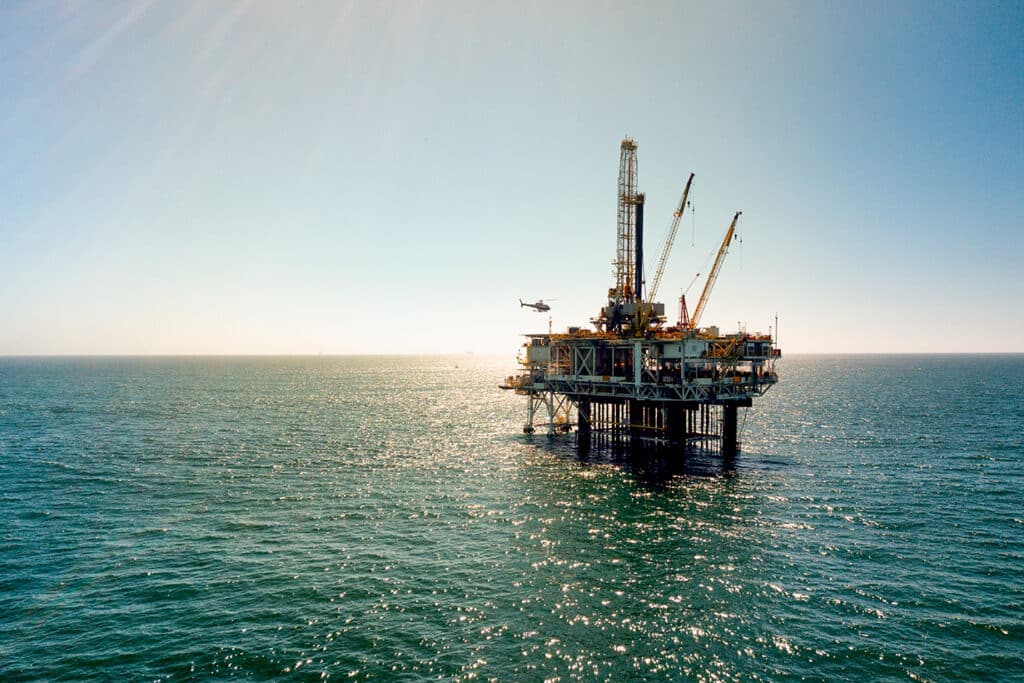
13. UN Meet To Debate Deep Sea Mining
A two-week conference organized by the International Seabed Authority, an independent body created by a United Nations treaty convened. High demand for metals ranging from copper to cobalt is pushing the mining industry to explore the world’s deepest oceans, a troubling development for scientists who warn that extracting minerals from critical ecosystems that help regulate climate could cause irreparable damage. The International Seabed Authority recently hosted dozens of scientists, lawyers, and government officials for a two-week conference to discuss and debate the issue.
Proponents of mining point to the rare minerals being necessary for advanced green technologies. Mining also generates revenue for smaller nations to combat the effects of climate change.
However, opponents point out that pristine ocean beds risk massive disruption, the effects of which are simply not known. The minerals in question can take millions of years to replace.
Conservationists are pushing for tougher regulation of the ISA’s member nations. The ISA is pledged to marine conservation but does earn its funding by licensing mining projects.
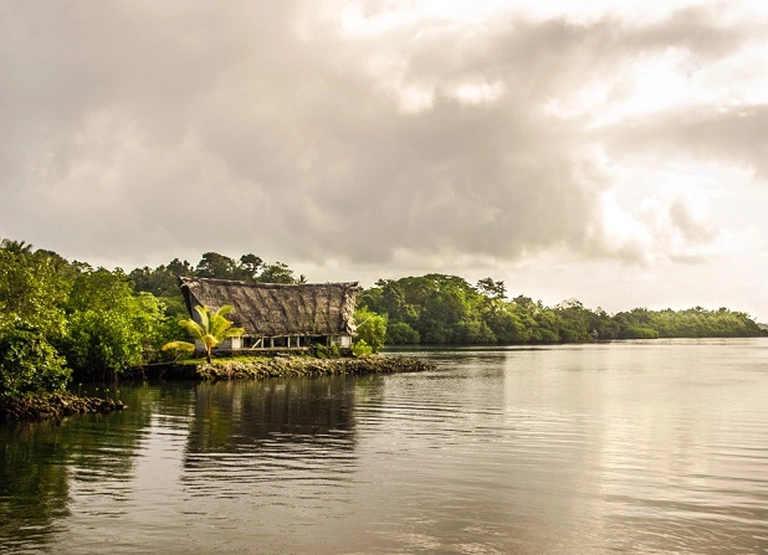
14. Small Island Huge Protection
Swimming and fishing are more important in Niue than in most places, according to Niuean minister Mona Ainu’u, because there is so little solid ground. Ainu’u recently designated an entire exclusive economic zone (EEZ) for Niue, the size of Vietnam, as a multi-use marine park called Niue Nukutuluea in April 2022. A no-take marine protected area covers 40% of the park, with a smaller portion managed by local villages. Furthermore, approximately 56% of the park is a general-use zone where commercial fishing and other activities, including possible deep-sea mining (which is being fought against), could occur. There is still much to be done, and it is unknown how the marine park will impact fish populations and ecosystem health. The designation, however, is only one step in a long journey that began in the past and will continue into the future for Ainu’u and many others
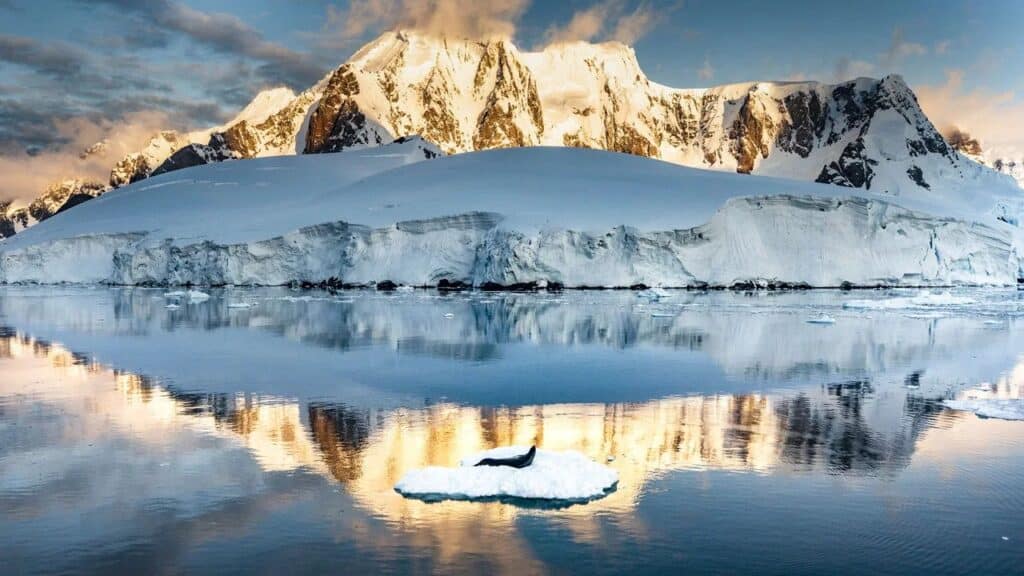
15. Antarctic Protection Fails Again
The 41st conference of the Antarctic Commission CCAMLR in Hobart, Australia ended on Friday without the hoped-for breakthrough, the Antarctic and Arctic Ocean Association (ASOC) said. Also, no agreement was reached at the two-week meeting on stricter fishing measures, which were specifically planned with a focus on the important krill.
Conservationists are increasingly frustrated that the CCAMLR Commission continues to fail to take meaningful action to better protect the Southern Ocean in the face of the growing climate and biodiversity crisis, according to the ASOC, which brings together organizations from 40 countries.
Although 25 of the 27 members are in favor of it, the project repeatedly fails due to resistance from China and Russia. CCAMLR decisions must be unanimous. This specifically blocks the protection of four million square kilometers of the most fragile Antarctic ecosystems.
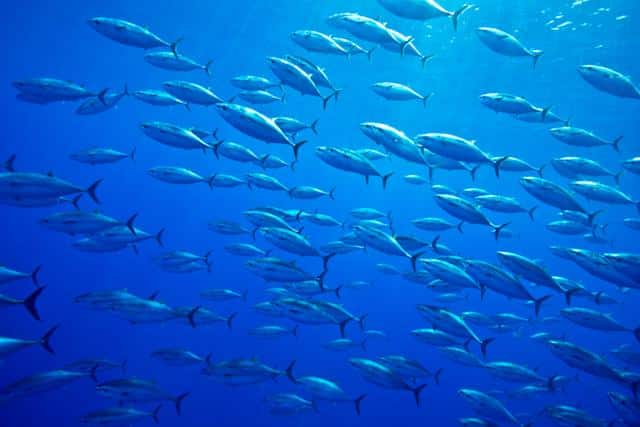
16. Protected Bluefin Tuna Bounce Back
By 2009, the Atlantic bluefin population was on the verge of extinction. Things have recently improved though; the western population status has been slower, but the eastern Atlantic and Mediterranean populations are well on their way to recovery. That doesn’t mean the Atlantic bluefin population is safe yet though; however, by implementing the harvest strategy by the International Commission for the Conservation of Atlantic Tunas (ICCAT), the risk of the fish’s extinction can significantly be reduced. The harvest strategy is a set of pre-agreed actions, such as raising or lowering catch limits, that are triggered automatically based on the status of the bluefin population. If scientists’ predictions are correct, implementing this strategy could help stabilize fisheries and markets while also ensuring the long-term viability of not only the Atlantic bluefin but also other vulnerable fish populations around the world.

17. COP27 – Countries’ Report Cards – “Must Try Harder”
UN Environment Program – EMISSIONS GAP REPORT 2022: The Closing Window – Inadequate progress on climate action makes urgent transformation the only option
This is the 13th edition in an annual series providing an overview of where greenhouse emissions are predicted to be in 2030 and where they should be to avert the worst impacts of climate change.
It shows that updated national pledges since COP26 – held in 2021 make a negligible difference to predicted 2030 emissions and that we are far from the Paris Agreement goal of limiting global warming to well below 2°C. Policies currently in place point to a 2.8°C temperature rise by the end of the century.
The report finds that only an urgent system-wide transformation can deliver the enormous cuts needed to limit greenhouse gas emissions by 2030. This report provides an in-depth exploration of how to deliver this transformation, looking at the required actions in the electricity supply, industry, transport and buildings sectors, and the food and financial systems.
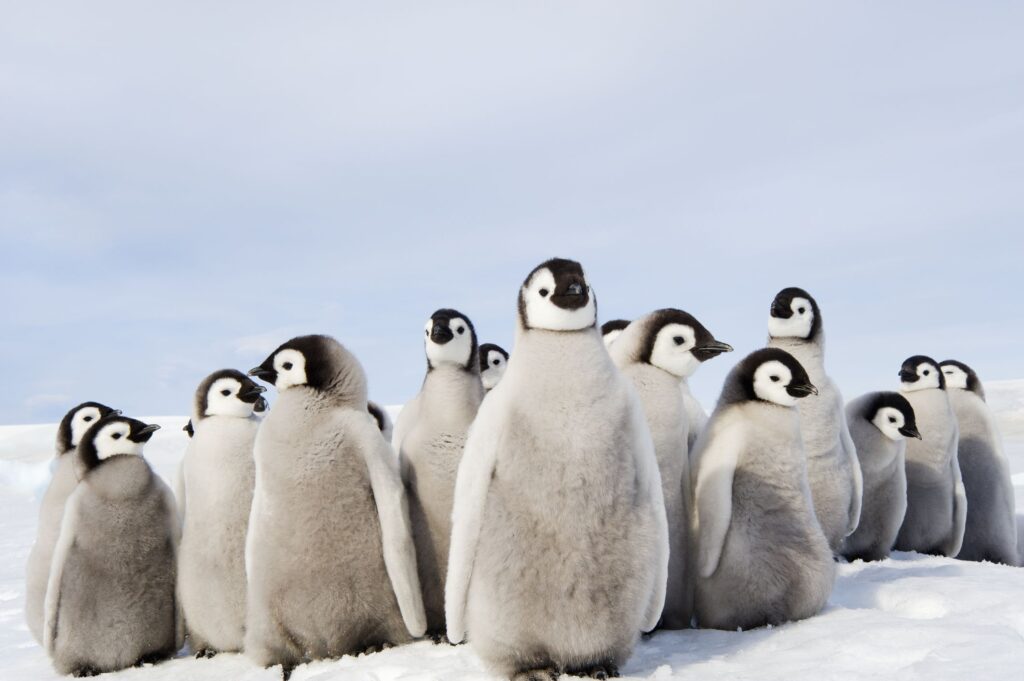
18. Emperor Penguin Babies Need Help
The emperor penguin is considered an iconic and ecologically important species of Antarctica. Its colony sites and at-sea movements have been the basis of previous discussions of conservation priorities in terms of marine protected areas (MPAs), important bird areas, or areas of ecological significance. With a population currently estimated at ca 270 000 breeding pairs in 61 known colonies around the continent, the species is severely threatened by global warming and expanding fishing activities in the Southern Ocean, facing the risk of being nearly extinct within this century.
The study found that juveniles spend approximately 90% of their time outside the boundaries of proposed and existing MPAs,
The most effective actions to protect the emperor penguin from anthropogenic impacts would be a reduction in greenhouse gas emissions, as well as the establishment of MPAs throughout its habitat range
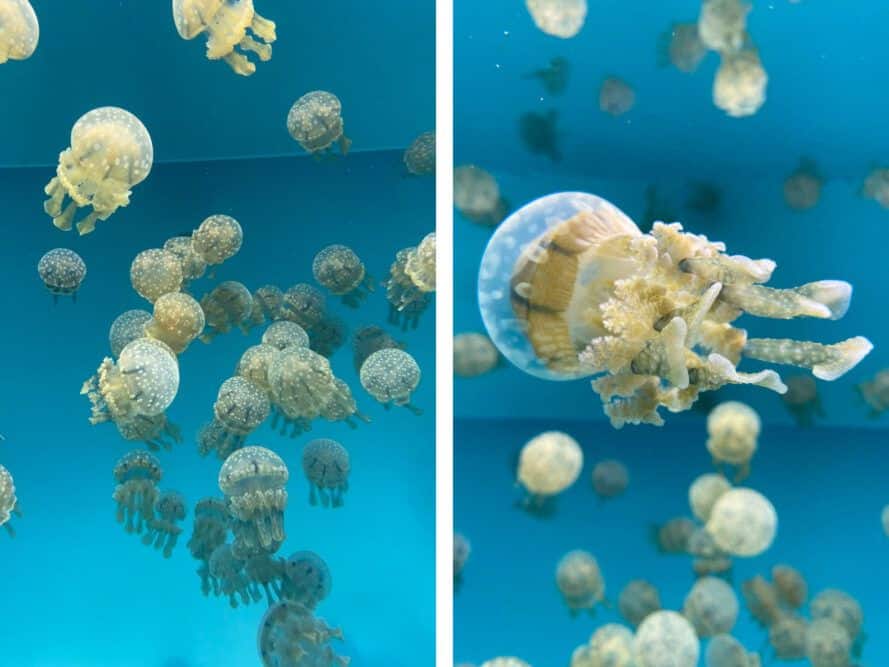
19. Jellyfish Invasion – Storms or Climate Change?
Britain’s seas are becoming populated with large groups of unusual jellyfish. Reasons for this phenomenon, weather or climate change; differ depending on source.
In its first marine sightings report, which builds on 20 years of citizen science, the society has found an increased abundance of jellyfish types, including those normally found in warmer climes. Thousands of volunteers take part in the MCS report, telling the conservation group which species of jellyfish and turtles they have seen.
Between 1 October 2021 and 30 September 2022, there were a total of 1,315 jellyfish sightings reported to the MCS. Eight jellyfish species are normally seen around the UK and Ireland but this year 11 were spotted, with more uncommon visitors now visiting these water




